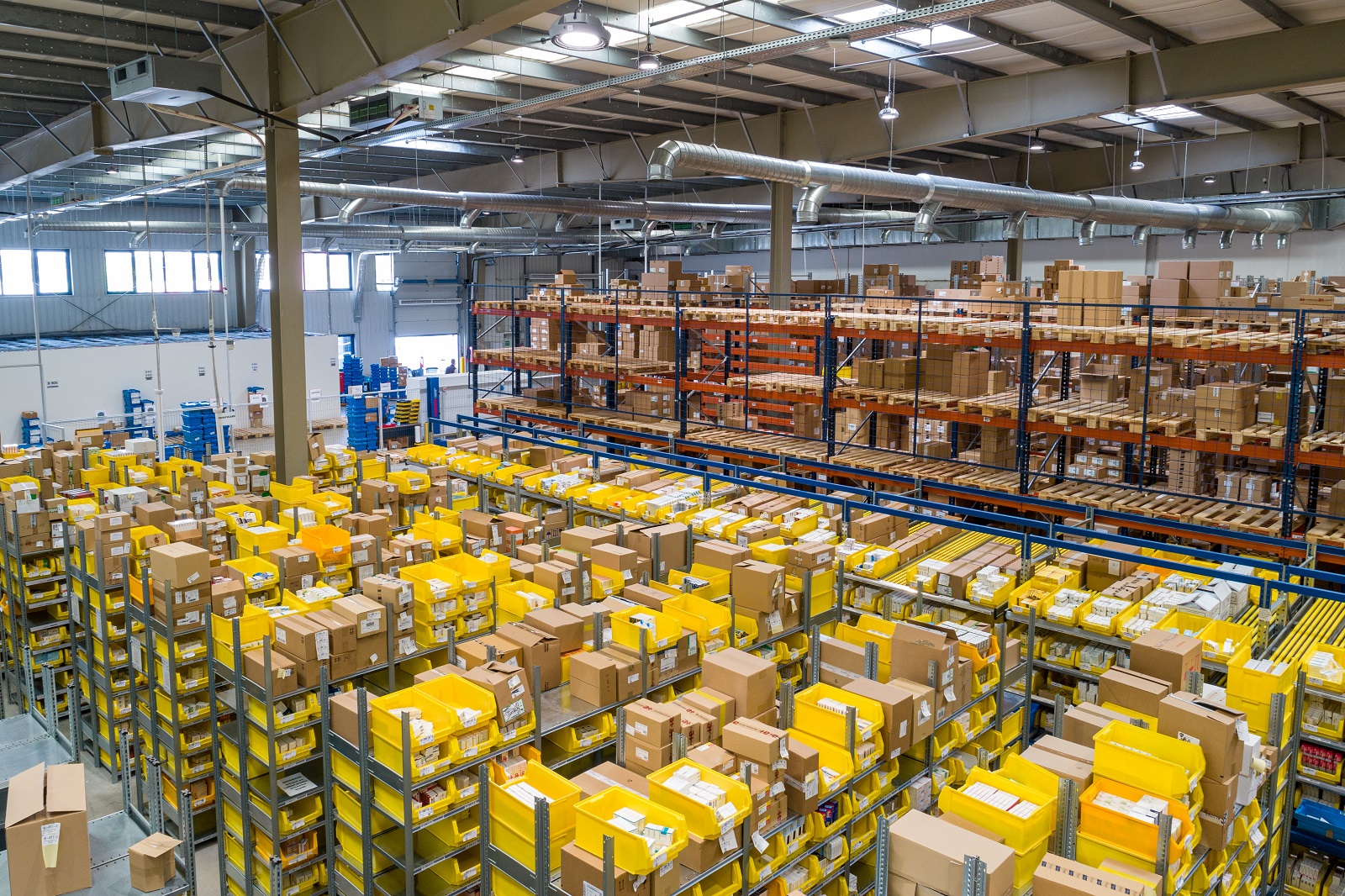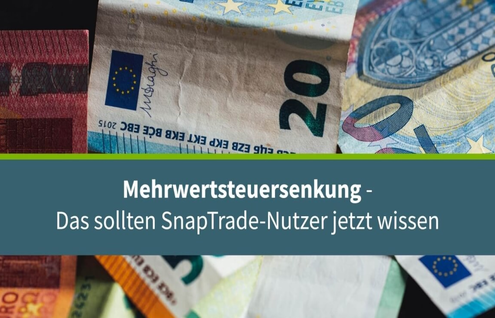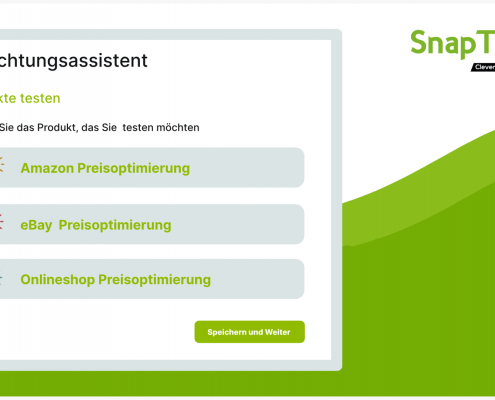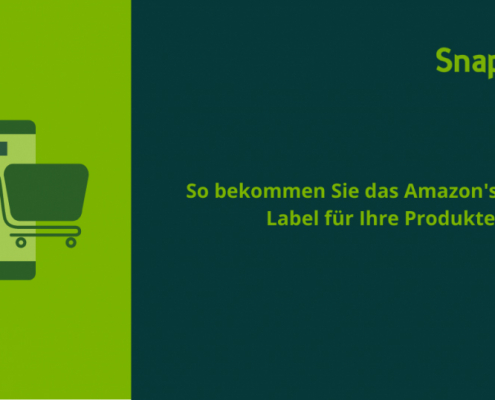Amazon Business with record growth: Why the marketplace environment is becoming increasingly attractive for B2B companies

Basically, we don’t need to say too much more about the advantages of e-commerce in the B2C sector; after all, 82% of consumers in this country regularly make purchases on the Internet (source: destatis.de). The proportion in the B2B sector is much lower. The reasons for this are complex; for example, B2B transactions are often far more complex and require individual advice. But that doesn’t change the fact that the corona pandemic has also acted as a growth driver in B2B e-commerce. One of the pioneers in this field is, how could it be otherwise, corporate giant Amazon.
Since its inception, the B2B spin-off Amazon Business has been on a steady growth trajectory. That’s not too much of a surprise per se. However, if you take a look at the growth rates, the sales development looks impressive even by Amazon standards. So will the e-commerce leader take a dominant position, as it already has in B2C sales, or is there a real chance for smaller providers to gain a lucrative share of the market? In this article, we want to get to the bottom of this question and take a look at why there is a real gold-rush atmosphere in B2B e-commerce right now.
Status quo: Complexity inhibits digitization at B2B companies
E-commerce in the B2C sector essentially consists of the transaction itself: Interested customers choose the product that best suits them from a wealth of items, go through an ordering process similar to that on online stores and marketplaces, and after a few days they take delivery of the item. With today’s means, this process can be mapped very easily.
This looks a little different for B2B processes, depending on the industry. Although simple products such as craftsmen’s and office supplies can be sold with similar ease as at the B2C level, as complexity increases, so do the demands on B2B sales. Business-level transactions often require individualized advice and precise sizing, followed by an extensive after-sales process. The capabilities of many B2B online stores and marketplaces are not yet sufficient for this today. Often B2B online stores are not much more than digital product catalogs and purchase is only possible on request. A completely digital shopping experience is often still a long way off here.
Corona and immense sales potential as innovation drivers
The fact that digitization is also advancing in the B2B sector is not changed by the more difficult framework conditions. As in the B2C sector, the corona pandemic proved to be a decisive innovation driver here as well. Because direct customer contact via on-site meetings and trade fairs was suddenly no longer possible, B2B companies also had to look for alternative sales channels.
But even without the pandemic, digitization in B2B e-commerce would only be a matter of time, because lucrative profits lie dormant here. According to statistics, the global market volume in the business-to-business sector is five times larger than in the B2C sector. In Germany alone, the market volume of B2B online trade amounts to EUR 1.49 trillion. The B2C market in Germany is “only” worth 86.7 billion euros.
These profit prospects attract platform operators. One company that wants to lead the way is, of course, marketplace leader Amazon.
Reading tip: What’s happening at Amazon? We present current Amazon trends in this article.
Amazon Business: The B2B spin-off in the fast lane
Amazon Business was already created in 2015, at that time still under the name Amazon Supply. After just 2 years, the gross merchandise volume (GMV) was around 10 billion US dollars. Experts predict that GMV will exceed $75 billion in 2025, just 10 years after its inception. So the growth rate is enormous even in the cosmos of the corporate giant.
Amazon Business is also positioning itself as a generalist in B2B e-commerce and has around 250 million products from a wide range of categories in its portfolio. Of these, maintenance, repair and ancillary services (so-called MROs) make up by far the largest main category. In addition, Amazon’s B2B marketplace is mainly home to items that can be shipped quickly – more complex products requiring a high level of consultation tend to be fewer in number. When it comes to delivery speed, Amazon makes full use of the strength of its logistics network.
Reading tip: Delivery speed is trumps, even when awarding the Amazon BuyBox! That’s what we found out as part of our BuyBox experiment.
With its generalist strategy and B2C experience, Amazon Business has become one of the leading B2B marketplaces. And the business-to-business offshoot is set to grow further. With the help of active sourcing, the Group attracts more users to the platform. In addition, in-house financing options will provide more incentives for sellers. To this end, the team around the credit offerings, Amazon B2B Payments & Lending, will be further expanded.
Amazon B2B sellers already offer these advantages
In addition to the benefits that are still to appear on the B2B marketplace in the future, Amazon Business already offers its sellers numerous incentives.
This includes the allocation of volume discounts, which plays a major role in business transactions. Here, Amazon gives sellers a lot of freedom of choice and lets them assign prices and discounts completely freely. The discount scales are displayed to interested customers directly in the frontend.
Sellers receive information from Amazon about which items are in particularly high demand and where market niches can be filled. This shows how eager the Seattle-based group is to close gaps in its portfolio. Amazon also wants to make day-to-day business as easy as possible for its B2B sellers: Many standard processes are automated, including invoice generation and VAT reporting.
One of Amazon’s greatest strengths is the aforementioned extensive logistics network, which is already a core selling point of the FBA program at the B2C level as well. For sellers who have insufficient logistical resources, Amazon Business offers its own fulfillment services. Sellers also receive support in the area of product marketing. Sponsored ads can be used to highlight products in search results and category pages. Even an insertion on the detail pages of competitor products is possible.
Reading tip: If you want to learn even more about Amazin Business and its benefits, we recommend you to visit the official homepage.
The incentives for buyers are also great
Amazon Business is already making purchasing much easier for businesses. In principle, they can access the B2B marketplace with their conventional B2C account. However, using a dedicated Amazon Business account offers great advantages to end customers:
Receipt of a proper invoice: In order for B2B products to be tax deductible, an invoice is required that contains all legally required information. You don’t always get these as a B2C customer, but with Amazon Business that’s the case.
Additional data: Merchants can store additional receipt or order numbers, which significantly simplifies purchasing for regular transactions.
Assignment of rights: Companies can assign approvals and restrictions for different buyers and even set budgets.
Purchasing analysis: Companies with 10 or more users have access to the Spend Visibility service, which helps evaluate the company’s purchasing behavior and identify potential savings.
Benefits like these make Amazon’s B2B channel much more attractive to business customers than the traditional B2C marketplace. It can be assumed that Amazon will also expand in this area so that user numbers continue to rise.
Be successful with SnapTrade on online marketplaces and your own online store
SnapTrade analyzes your competitors’ offers and automatically adjusts the prices of your marketplace offers as needed. Via an evaluation of well-known price comparison portals such as idealo, billiger.de and Google Shopping, you also receive price suggestions for your online store.
Is the B2C scenario repeating itself? This speaks for a significantly more diverse B2B e-commerce
Although Amazon Business already has the largest market share of all B2B marketplaces, there are indications that the B2B environment will become much more diversified. This is due to the complex requirements B2B retailers face when selling their items. This is exactly where marketplace operators could come in and offer the right solutions for a fully digital purchasing process or after-sales management. Unlike in the B2C segment, business relationships between B2B companies are often longer-term, so that even very specific market segments with a small customer base are attractive to operators as long as customers keep buying. To ensure this, it is essential to know the challenges of one’s own target group as well as possible and to simplify the everyday business of B2B customers as much as possible.
Frequently asked questions about Amazon Business and B2B e-commerce
What is the difference between B2C and B2B e-commerce?
E-commerce in the B2C segment is essentially limited to the transaction itself. In the B2B sector, however, the items are often consultation-intensive and much more complex. This makes it more difficult for marketplace operators and B2B online stores to offer a fully digital shopping experience.
What is Amazon Business?
Amazon Business is Amazon’s B2B offshoot, which first launched in 2015 under the name Amazon Supply. The B2B marketplace offers business customers a number of benefits, such as receiving proper invoices or rights and budget allocation.
What’s available to buy on Amazon Business?
As in the B2C business, Amazon Business is positioning itself as a generalist with a broad range of products. By far the largest group, however, is made up of maintenance, repair and auxiliaries (so-called MROs). These are characterized by the fact that they are ready for shipment quickly. More complex items are currently still less to be found on the B2B marketplace.
What does it cost to sell on Amazon Business?
There are currently no extra fees for merchants who want to sell on Amazon Business. The sale is included in the subscription (39 EUR/month) of a traditional Amazon account. However, as with the traditional B2C marketplace, fees may apply to each transaction depending on the product category.











